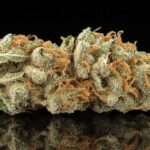Introduction
Epilepsy is more than just a medical term; it’s a challenging reality for millions around the globe. Characterized by recurrent seizures, this neurological disorder often leads patients down a frustrating path filled with trial and error involving various treatments. For those who confront severe forms like Dravet syndrome or Lennox-Gastaut syndrome, traditional medications may not suffice. This is where the intriguing potential of cannabinoids—particularly cannabidiol (CBD)—comes into play. This article explores how CBD and other cannabinoids are making waves in the realm of epilepsy treatment, offering hope for patients whose needs have largely gone unmet.
Understanding Epilepsy and Seizures
Epilepsy isn’t a monolith; it encompasses a diverse range of seizure types and syndromes, each presenting unique challenges. Tonic-clonic seizures, atonic seizures, and focal seizures just skim the surface. Among the most severe forms, Dravet syndrome is particularly notorious for its frequent and potent seizures that can disrupt everyday life for patients and their families. Research indicates that approximately 1 in 26 people will be diagnosed with epilepsy in their lifetime, underscoring the urgency for effective treatments.
Cannabinoids and Their Anticonvulsant Properties
Cannabinoids are naturally occurring compounds found in the cannabis plant. Among these, THC and CBD are the most researched, each possessing distinct properties. While THC is well-known for its psychoactive effects, CBD stands out as a promising therapeutic option without the associated mind-altering consequences.
Cannabidiol (CBD)
CBD has made headlines for its anticonvulsant properties. Several clinical trials have illustrated its capability to significantly reduce seizure frequency in patients with treatment-resistant epilepsy. Epidiolex, a pharmaceutical-grade CBD product, is now FDA-approved specifically for conditions like Dravet syndrome and Lennox-Gastaut syndrome. Research shows that patients using Epidiolex have experienced a reduction in seizure frequency ranging from 37% to 49% compared to those receiving a placebo.
Mechanisms of Action
Understanding how CBD operates at a molecular level provides insight into its efficacy as an anticonvulsant. Here are some key mechanisms being studied:
- Modulation of Electrical Signals: CBD appears to influence the transmission of electrical signals in the brain, interacting with calcium channels and affecting neurotransmitter release.
- Blocking Lysophosphatidylinositol (LPI) Signals: Recent studies suggest that CBD interrupts signals carried by LPI, a molecule responsible for amplifying nerve signals and potentially contributing to seizures.
- Interaction with 5-HT1A Receptors: CBD’s anticonvulsant effects may also be linked to its engagement with 5-HT1A receptors, which, when blocked, diminish its effects.
Combination Therapies
Notably, the research has indicated that using CBD in conjunction with other cannabinoids such as THC could potentially amplify its anticonvulsant effects. For instance, a study reported that a specific ratio of CBD to THC (20:3) showcased significantly greater anticonvulsant activity than either cannabinoid alone. This underlines the value of combination therapies, suggesting a tailored approach could yield better outcomes for some patients.
Other Cannabinoids
Beyond CBD, other cannabinoids are emerging as potential players in epilepsy treatment. Cannabigerolic acid (CBGA), for example, demonstrated promising anticonvulsant effects in animal studies, outperforming CBD in reducing seizures in Dravet syndrome models. However, it’s critical to note that while CBGA showed potent effects at lower doses, higher doses elicited proconvulsant reactions, underscoring the complex and nuanced roles cannabinoids might play.
Clinical Evidence and Trials
The validity of cannabinoid therapies is steadily gaining traction, backed by a wealth of clinical trials. For instance, patients with Lennox-Gastaut syndrome and Dravet syndrome who incorporated CBD into their existing treatment regimens observed significant reductions in seizure frequency. These findings were corroborated in long-term open-label extension studies, reflecting sustained benefits over time.
Safety and Side Effects
While CBD is generally well-received, it’s not entirely devoid of side effects. Most notably, users may experience:
- Drowsiness
- Diarrhea
- Changes in appetite
However, it’s essential to juxtapose these side effects with those often associated with conventional antiepileptic drugs, which can be far more severe in some cases. Overall, CBD’s safety profile remains favorably viewed, especially considering its potential for relieving symptoms without extensive adverse effects.
Future Prospects and Research Directions
The horizon of cannabinoid research is promising, particularly concerning epilepsy. Key areas under investigation include:
- Developing Better Cannabis-Based Treatments: Researchers are keen on unraveling the interactions between cannabis components to harness their collective therapeutic potential.
- Clarifying Mechanisms of Action: Further studies aim to elucidate the intricate ways cannabinoids interact with the brain to facilitate seizure reduction.
- Expanding Treatment Options: Inspired by the success of CBD, there is a growing advocacy to explore other cannabinoids, alongside varying ratios and preparations, to broaden the therapeutic arsenal against epilepsy.
Conclusion
In the ever-evolving discussion of epilepsy management, cannabinoids—especially CBD—have emerged as a beacon of hope for many managing severe forms such as Dravet syndrome and Lennox-Gastaut syndrome. The current body of evidence indicates that these compounds can effectively reduce seizure frequency and enhance patients’ overall quality of life. As ongoing research continues to reveal the depth of cannabinoids’ potential, the future looks promising for groundbreaking treatments that could revolutionize how we approach epilepsy.
Actionable Tips for Patients and Caregivers
- Consult Healthcare Providers: It’s crucial to discuss any plans to incorporate cannabinoids into treatment plans with healthcare providers. Tailoring your approach based on professional medical advice is key.
- Monitor Dosage and Side Effects: Diligently keep track of any doses administered and note any side effects that arise, adjusting the regimen as advised by a medical professional.
- Stay Informed: Keep abreast of the latest research developments and clinical trials, enabling informed decisions about the incorporation of cannabinoids into your treatment plan.
By seeking guidance from medical experts and staying aware of emerging research, patients and caregivers can navigate cannabinoid therapies for epilepsy with greater confidence, exploring pathways that may provide much-desired relief and renewed hope.





















